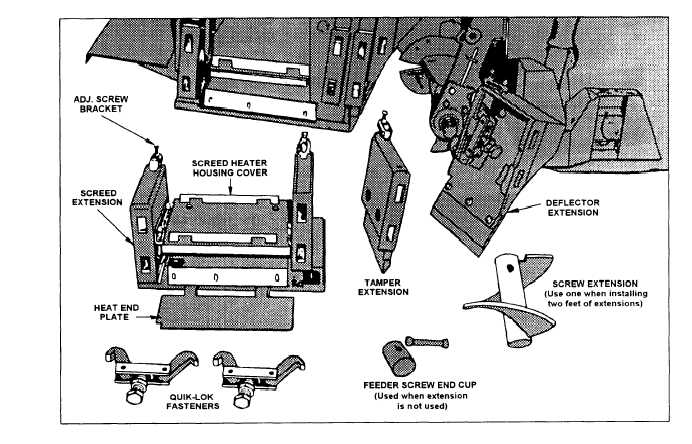Selecting a Reference System.— Two types of
reference systems, such as stationary or traveling, to use
with an automatic screed control depend on the
f o l l o w i n g f a c t o r s :
. The condition of the surface on which the mat is
to be placed.
. The degree of precision required in the grade and
slope of the finished pavement.
l The thickness of the mat.
. The amount of material available for the
project.
When the surface on which the mat is to be placed
has a good longitudinal grade along its center line but
has an unsatisfactory transverse grade, a traveling
reference, run along the center line, can be used
effectively to provide the desired mat thickness at the
center line and the transverse slope control, used to
establish the outside grade.
When the longitudinal grade is erratic, a string
line should be placed to ensure a proper longitudinal
grade. When the existing surface has a good profile
both longitudinally and transversely, automatic screed
controls may be unnecessary. The self-leveling ability
of the screed may be sufficient.
When automatic
controls are used, a traveling reference system would be
adequate.
SCREED HEATERS.— The screed is equipped
with heaters, used to heat the screed plate at the start
of each new paving operation. The heaters are not
used to heat the mix during the paving operation. If
the screed is not initially heated, the mix will tear and
the texture will look open and coarse, as it would if
the mix were too cold. There are times when the paver
operator allows the mix to heat the screed plate. This
practice almost always results in a section of
unsatisfactory pavement being laid while the screed
is being heated.
SCREED ACCESSORIES.— Three types of
commonly used screed accessories are screed exten-
sions, cutoff shoes, and bevel end plates.
Screed Extensions.— Screed extensions (fig.
16-46) are attachments that widen the screed, allowing
the paver to place a wider-than-normal mat. On some
Figure 16-46.-Screed extension accessories.
16-41

